|
|
|
|
|
|
|
New six-year strategic science platforms have been established at the Cawthron Institute to support research to improve the performance of New Zealand's seafood safety and shellfish aquaculture, and at the Leather and Shoe Research Association (LASRA) to support hide and skin processing industries. These science platforms are part of the Strategic Science Investment Fund (SSIF), supporting programmes and infrastructure of enduring importance to New Zealand. In June, the Health Research Council also announced similar strategic research support for the Malaghan Institute and the Medical Research Institute of New Zealand
MORE →
|
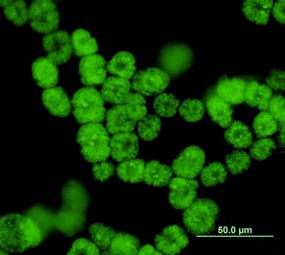
|
Gymnodinium catenatum: a bloom-forming species of microalgae found in NZ waters. Image: Cawthron Institute. |
|
|
|
|
|
|
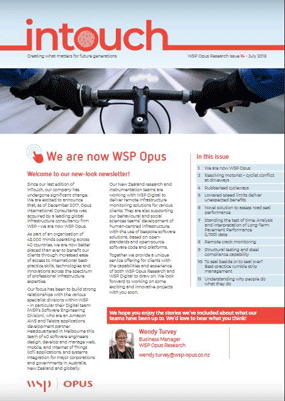
|
Read the latest issue of WSP Opus Research's Intouch Newsletter. |
|
In December 2017, Opus International Consultants was acquired by a leading global infrastructure consultancy firm WSP and has recently been rebranded as WSP Opus, with the research division becoming WSP Opus Research.
In their latest InTouch newsletter, Wendy Turvey WSP Opus Research Business Manager said the move has greatly broadened the research division’s capacity to become involved with exciting and innovative projects. “As part of an organisation of 43,000 minds operating across 40 countries, we are now better placed than ever to benefit our clients through increased ease of access to international best-practice skills, technologies and innovations across the spectrum of professional infrastructure expertise.
MORE →
|
|
|
|
|
|
Malaghan Institute's Professor Franca Ronchese spoke to Noelle McCarthy on RNZ about the science behind developing an allergy, and what we can do to try and interrupt it.
Prof Ronchese is head of the immune cell biology programme at the Malaghan Institute, and specialises in dendritric cells.
"In allergies ... our body is trying to fight infection and it's trying to fight something it thinks is dangerous and can affect our health.
"For some reason, allergens - which are not dangerous, because pollens, and so on, do not really have an effect on our body - are mistaken for something that needs to be fought."
MORE →
|
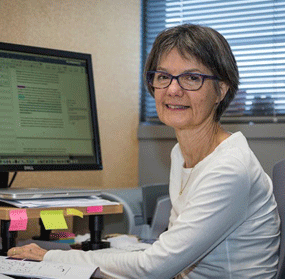
|
Professor Franca Ronchese, head of the immune cell biology programme at the Malaghan Institute. Photo: Malaghan Institute |
|
|
|
|
|
|
The Malaghan Institute of Medical Research’s cancer immunotherapy team has been given the green light to investigate new potential vaccines for breast cancer thanks to a Health Research Council (HRC), Breast Cancer Cure and Breast Cancer Foundation NZ grant.
The research, led by Dr Robert Weinkove, Clinical Director at the Malaghan Institute, will focus on new classes of cancer vaccines, which aim to target the disease.
“One of the major areas for improvement of existing treatments is preventing late relapses,” says Dr Weinkove. “In breast cancer, this can happen many years after a patient's initial treatment. Metastasis – the spread of the cancer cells from the place where they first formed – is a devastating event.”
The research builds on a collaboration with Victoria University of Wellington’s Ferrier Research Institute, which has Breast Cancer Foundation NZ funding to develop synthetic breast cancer vaccines.
MORE →
|
|
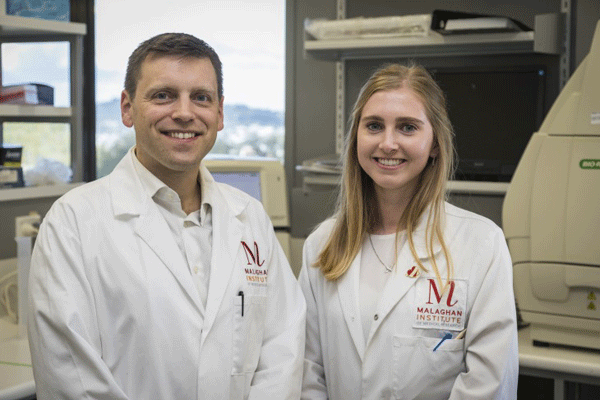 |
|
Dr Rob Weinkove and PhD student Olivia Burn. Photo: Malaghan Institute. |
|
|
|
|
|
Lincoln Agritech has recently been awarded two three-year Ministry of Primary Industries Sustainable Farming Fund (SFF) contracts to investigate the use of catch crops to reduce nitrate leaching; and assess the feasibility of using optical sensors for nitrogen fertilised dairy pastures. The first project builds on research by Dr Peter Carey at Lincoln University and aims to upscale this applied research into working winter crop rotations in Canterbury and Southland. The second project will assess using optical sensors for biomass and N-status monitoring in pastures. Both projects will ultimately lead to improved N-use efficiency on dairy farms and reduced nitrate leaching.
|
| MORE → |
|
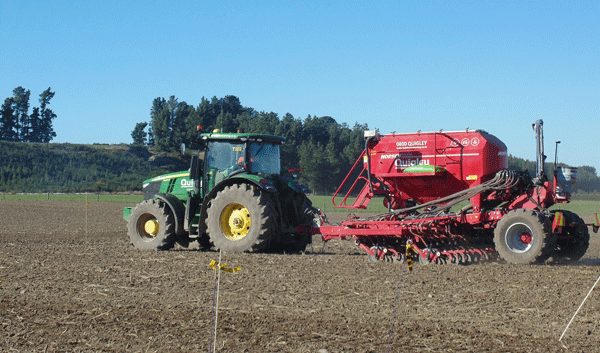 |
|
Drilling the catch crop trial plots with a variety of oats, triticale, and Italian ryegrass at Craigmore Farming’s Te Awa farm near Te Pirita, Canterbury. Photo: Lincoln Agritech. |
|
|
|
|
|
Significant reductions to nitrogen (N) leaching can be achieved by changing irrigation management practices, and new research has demonstrated just how big those benefits can be.
A study led by Dr John Bright, Director Research and Development at Aqualinc Research Ltd, and funded by the Fertiliser Association of New Zealand, has shown that it is possible to achieve an average of 27% reduction in N loss. The researchers experimented with a different approach than the current practice of irrigating if the soil moisture content drops below 50% of its ‘plant available’ water.
MORE →
|

|
Significant reductions to nitrogen (N) leaching can be achieved by changing irrigation management practices. Photo: Aqualinc. |
|
|
|
|
|
|
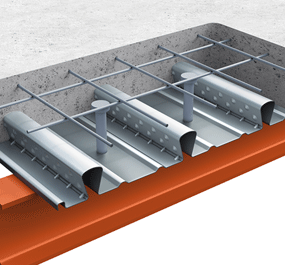
|
A profile of the new ComFlor SR floor product released into the NZ market by Steel & Tube. Image: HERA. |
|
HERA has helped their member Steel & Tube create a new product range for flooring in New Zealand. The new composite slab product, ComFlor SR, will give confidence to specifiers due to the rigorous testing and evaluation it was put under, and assist engineers in designing building floors more efficiently and easily. The new design, using steel, has enhanced fire resistance, vibration and acoustic properties – making it an attractive option in the important multi-storey residential sector. The Structural Systems R&D team at HERA say they look forward to its uptake in the market.
MORE →
|
|
|
|
|
|
The Centre for Space Science Technology has announced an exciting new venture with Planet, an integrated aerospace and data analytics company, to help drive regional economic growth in New Zealand by distributing Planet’s daily, global Earth observation data and analytics.
CSST will act as the distribution hub and R&D partner for Planet in New Zealand, making sure a breadth of industries and government agencies get efficient access to Planet’s data and analytic products.
MORE →
|

|
Signs of water pooling on glaciers in Tibet (left) preceded a pair of avalanches (right). Image: Planet Labs Inc. |
|
|
|
|
|
|
Welcome to our new Regional Research Institutes
In mid-August, IRANZ executive members Drs Murray McCurdy and Rob Whitney met with the CEOs of New Zealand's newly-formed Regional Research Institutes (RRIs) to get a run down on their upcoming research plans.
The Centre for Space Science Technology (CSST) is based in Alexandra. The organisation was established in May 2017 and was one of the first RRIs to get off the ground in New Zealand. CEO Steve Cotter says that “CCST aims to handle the entire Earth observation data life-cycle, from system design, data capture, data management, dissemination, through to training and support”.
New Zealand Institute for Minerals to Materials Research (NZIMMR) began operating on 1 July. Chief Executive Tony Hogg, a returning West Coaster, said the institute's first research areas would be into the use of rare earth elements in materials such as magnets and lasers; of tungsten extraction from old gold mining waste material; and of creating carbon foams out of coal. The institute is based in Greymouth.
New Zealand Winegrowers Research Centre will provide cutting-edge science, research and development to benefit New Zealand's entire wine industry, and its key stakeholders. Chief Executive MJ Loza says it will be based in Marlborough, but have a national focus, and global reach, providing world-leading research for commercial grape and wine production.
PlantTech Research RRI is based in the Western Bay of Plenty. Newly appointed CEO Mark Begbie says that PlantTech will leverage regional strengths in horticulture to create a unique applied research capability that can accelerate innovation for knowledge-intensive companies, the region, and New Zealand. PlantTech will develop AI, robotics, IoT (internet of things), autonomous systems, and data science to deliver new products and services in the horticulture sector.
|
|
|
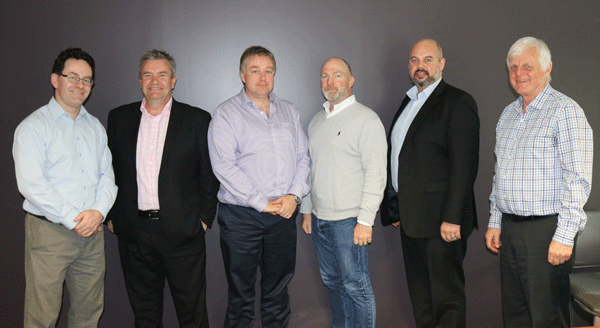 |
|
IRANZ executive members Drs Murray McCurdy and Rob Whitney took the opportunity in mid-August to meet with the CEOs of New Zealand's newly-formed Regional Research Institutes. From left to right Murray McCurdy, Tony Hogg from NZIMMR, Mark Begbie from PlantTech Research, Steve Cotter from Centre for Space Science Technology, MJ Loza from NZ Winegrowers Research Centre, and Rob Whitney. Photo: Louise Thomas. |
|
|
|
|
|
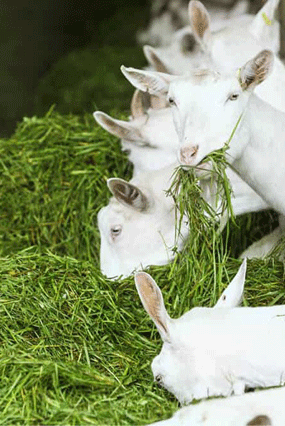
|
Photo: Dairy Goat Co-operative |
|
While the Cawthron Institute has always been known for its aquaculture and food analysis ability, some are surprised that they have the expertise and capabilities for developing novel analysis methods. Such was the case for dairy goat milk products.
For the past ten years, Cawthron Analytical Services’ Research and Development (R&D) team has been working closely with Dairy Goat Co-operative (NZ) Ltd (DGC) to meet its specialised requirements, growing and developing its R&D offering to complement and support DGC’s changing needs.
“It is our goal to be an active partner in developing innovation with our clients,” says Cawthron R&D Team Leader, Dr Tom Wheeler.
The Cawthron team has been developing methods to measure a range of both small molecule bioactives and macromolecules that are present in milk.
MORE →
|
|
|
|
|
|
The Cawthron Institute, Christchurch Clinical Studies Trust (CCST), and Sanford Limited have joined forces to identify and validate the health benefits of Greenshell mussels, in particular looking at potential anti-inflammatory qualities, improved joint and bone health, and increased mobility.
MORE →
|
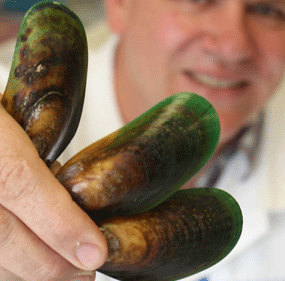
|
Cawthron Institute Marine Lipids Chemist Dr Matt Miller with some healthy mussels. Photo: Cawthron Institute. |
|
|
|
|
|
|
The Medical Research Institute (MRINZ) has teamed up with Auckland and Middlemore hospitals in a HRC-funded PIPPA Tamariki project to assess whether the use of paracetamol or ibuprofen for fever or pain in infancy affects the rates of asthma in children. They aim to recruit 4,000 newborn babies in the next four years.
"Illnesses with a fever can increase the risk of developing asthma in young children. Conversely, using fever medicines, such as paracetamol or ibuprofen, may also increase asthma risk, but this is not known for sure," says MRINZ Principle Investigator Dr Irene Braithwaite.
To help crack the case, PIPPA's team are currently recruiting babies in Wellington, Auckland, and Middlemore hospitals.
The PIPPA Tamariki project involves collaborations between the Auckland, Counties Manukau, and Capital & Coast District Health Boards as well as Auckland University, Otago University, Massey University, the University of Calgary, and MRINZ.
MORE →
|
|
 |
|
PIPPA Bear is on the case of asthma. Image: MRINZ. |
|
|
|
|
|
New road layouts in a South Auckland suburb are slowing cars and getting more people pounding the pavement says a recent NZ Herald article by Vaimoana Tapaleao.
The Te Ara Mua Future Streets project, in Māngere, has brought in a number of changes in road infrastructure in the area in the last few years; created in a bid to better road conditions for drivers, pedestrians and cyclists alike.
Hamish Mackie, of Mackie Research and Consulting, is the project leader. He has been involved in monitoring the changing behaviours since the different infrastructures were put in place.
"People like the look and feel of it. They like the pedestrian crossings, they like the wider footpaths, the shared paths and some of the cultural references."
|
|
MORE →
|
|
 |
|
More locals are riding bikes and walking as a result of the Te Ara Mua Future Streets initiative. Photo: Mackie Research. |
|
|
|
|
|

|
Catherine's work at Motu focuses on shaping a low-emission future for New Zealand and the evolution of emissions trading in New Zealand and internationally. Photo: Motu. |
|
Motu's Catherine Leining writes about New Zealand's Emissions Trading Scheme at Sciblogs. Sciblogs brings together the best science bloggers in the country on one website, creating a hub for scientific analysis and discussion and facilitating reader interaction.
Researchers from Motu Economic and Public Policy Research have published a new Guide to the New Zealand Emissions Trading Scheme. This guide covers the basics of how emissions trading works and discusses the core design features in operation today and how and why they have evolved over time. The release of this guide coincides with the start of a new round of government consultation on amending the NZ ETS.
MORE →
|
|
|
|
|
|
The latest issue of BRANZ's build magazine explains how a life cycle assessment tool, LCAQuick, developed by BRANZ calculates the climate change and environmental impact of a building design, showing hotspots and causes. It’s an easy way for designers to work out how to reduce greenhouse gas emissions in a building.
|
|
MORE →
|
|
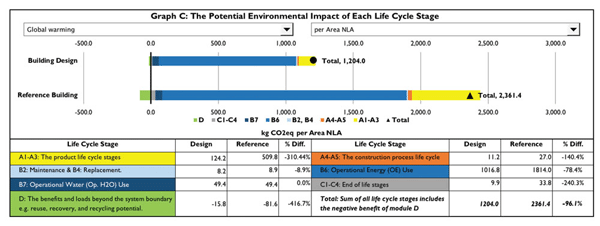 |
|
One of the many useful screens in LCAQuick. Image: BRANZ/build magazine. |
|
|
|
|
|
Building Better Homes, Towns and Cities (BBHTC) - Ko ngā wā kāinga hei whakamāhorahora - has announced the key themes of their research in the year ahead. Continuing to address New Zealand’s housing needs, the National Science Challenge is digging deeper into housing for our ageing population and how we can build spaces for generations. It is also investigating the delivery of more affordable, healthy homes and the development of attractive urban environments with smart, safe, walkable streets. Thriving regions are also at the forefront of upcoming research, identifying how we can plan and build homes, towns and cities that create strong communities.
MORE →
|
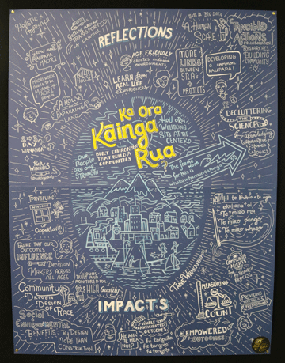
|
Creative brainstorming at the Building Better Homes, Towns and Cities Research Colloquium earlier in the year. The League of Live Illustrators used their talents to illustrate the conversation taking place around them. Photo: Louise Thomas. |
|
|
|
|
|
|
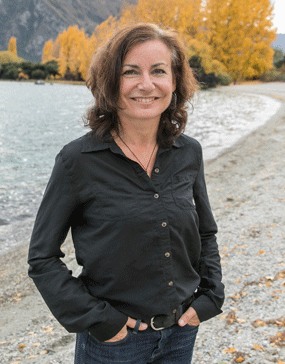
|
Dr Delwyn Moller, CSST's Director of Research, is thrilled about NASA's new venture for young Kiwis. Photo: CSST. |
|
New Zealand tertiary students will be offered the chance to participate in NASA’s International Internships Programme, under an agreement between the Ministry of Business, Innovation and Employment and NASA.
Through the programme, high-achieving students will have the opportunity to work in NASA’s best and most advanced research facilities, alongside expert mentors.
Dr Delwyn Moller, Centre for Space Science Technology's (CSST) Director of Research, helped announce New Zealand's involvement in the NASA programme at a launch event at the Carter Observatory in Wellington on 27 August, alongside the Minister of Economic Development David Parker and the United States Ambassador to New Zealand Scott Brown.
RNZ reported on the launch event:
MORE →
|
|
|
|
|
|
IRANZ has gone social - recently launching a Facebook page. For up-to-date information about the activities of our member organisations and same-day notification of updates to the website follow us on the link below.
FOLLOW HERE →
|

|
|
|
|
|
|
|
|
WHO WE ARE
IRANZ is an association of independent research organisations. Its members undertake scientific research, development or technology transfer. Members include Aqualinc Research Ltd, BRANZ, Cawthron Institute, CRL Energy Ltd, Centre for Space Science Technology (CSST), Heavy Engineering Research Association (HERA), Leather & Shoe Research Association (LASRA), Lincoln Agritech Ltd, Malaghan Institute of Medical Research, Medical Research Institute of New Zealand (MRINZ), Motu Economic and Public Policy Research, Opus Research, Titanium Industry Development Association Ltd (TiDA Ltd) and Transport Engineering Research NZ Ltd (TERNZ).
|
|
Contact: Dr Rob Whitney, Executive Officer, mobile: +64 27 2921050, email: information@iranz.org.nz
|
| Copyright © iranz |
|
|
|
|
|